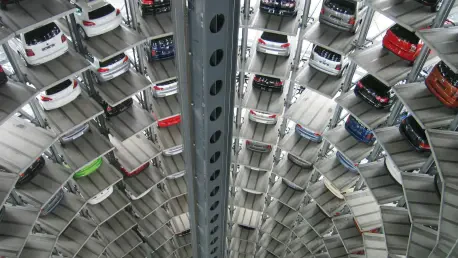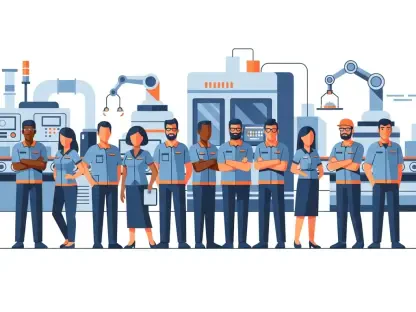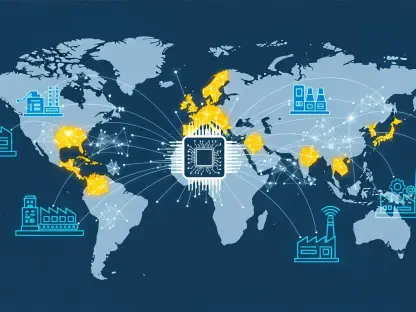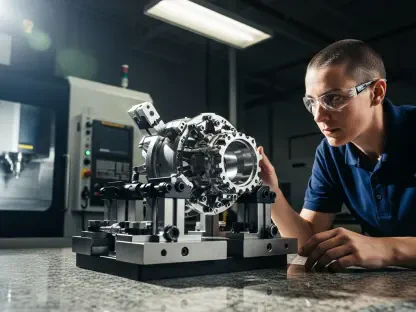Introduction to India’s Automotive Ambitions
Imagine a nation where every vehicle on the road is a product of domestic innovation, powered by sustainable energy, and built through a seamless collaboration between policymakers and manufacturers. This vision is not a distant dream but an achievable goal for India, as the automobile industry stands at a pivotal juncture in 2025. With the sector contributing significantly to economic growth and global positioning, the challenge lies in achieving true self-reliance across the manufacturing value chain. The urgency to reduce dependency on imports and embrace green technology has never been more pronounced, setting the stage for a transformative partnership between the government and industry stakeholders.
This report delves into the intricate dynamics of the Indian automotive sector, exploring its role in national development and the pathways to self-reliance. It examines emerging trends in sustainable mobility, the hurdles in domestic manufacturing, and the critical role of government policies in shaping a future-ready ecosystem. By analyzing market potential and collaborative strategies, the discussion aims to uncover how this synergy can propel India toward global leadership in automotive excellence.
The Role of the Automobile Industry in India’s Economic Growth
The automobile sector serves as a cornerstone of India’s economic framework, driving progress through job creation and industrial output. It accounts for a substantial share of the nation’s GDP, supporting millions of livelihoods across manufacturing, sales, and ancillary services. Beyond numbers, the industry enhances mobility, connecting remote regions to urban centers and improving access to opportunities for countless citizens.
Moreover, the sector elevates quality of life by providing reliable transportation solutions, from personal vehicles to public transit systems. It acts as a flagship for the ‘Make in India’ initiative, promoting domestic production and reducing reliance on foreign goods. This alignment with national priorities showcases the industry’s potential to transform local economies while fostering innovation in design and technology.
Globally, the Indian automotive industry is gaining recognition as a hub of excellence, attracting international partnerships and investments. By exporting high-quality vehicles and components, the country is carving a niche in competitive markets, bolstering confidence in its manufacturing capabilities. This growing reputation underscores the sector’s role in positioning India as a formidable player on the world stage.
Opportunities in Green and Smart Transportation
Emerging Trends in Sustainable Mobility
The shift toward green technologies marks a defining trend in India’s automotive landscape, with electric vehicles (EVs) leading the charge. As environmental concerns mount, manufacturers are pivoting to eco-friendly alternatives, integrating renewable energy sources into vehicle design. This transition not only addresses pollution but also aligns with global commitments to reduce carbon footprints.
Supporting this movement, modern technology is being seamlessly integrated with infrastructure to advance clean mobility goals. Smart charging networks, for instance, are expanding across urban areas, ensuring EV users have access to efficient power solutions. Additionally, digital platforms are enhancing traffic management, reducing congestion, and minimizing energy waste on roads.
Startups are playing a crucial role in this ecosystem, particularly in energy storage innovations. By developing advanced battery technologies, these emerging players are tackling range anxiety and cost barriers associated with EVs. Their contributions are vital in accelerating the adoption of sustainable transportation and positioning India at the forefront of green innovation.
Investment Potential and Market Growth
The transition to sustainable transportation opens up significant investment opportunities for both domestic and international stakeholders. With government incentives for EV production and renewable energy projects, the financial landscape is ripe for capital infusion. Private equity and venture funds are increasingly eyeing this sector, recognizing its potential for high returns over the coming years.
Market growth projections further highlight the promising trajectory of green and smart mobility solutions. Consumer demand for EVs and hybrid vehicles is expected to surge from 2025 to 2030, driven by rising fuel costs and environmental awareness. This shift is not just a trend but a fundamental change in how transportation is perceived, creating a robust market for innovative products.
These developments position India as a leader in global automotive innovation, with the potential to set benchmarks in sustainability. By capitalizing on these trends, the country can attract partnerships with tech giants and automotive pioneers, fostering a collaborative environment. Such alliances are essential for scaling up production and meeting the growing appetite for advanced mobility solutions.
Challenges in Achieving Self-Reliance in Manufacturing
Achieving self-reliance in automotive manufacturing remains a complex endeavor due to persistent dependencies on imported raw materials. Key components like semiconductors and rare earth metals are often sourced from abroad, exposing the industry to supply chain disruptions and fluctuating costs. Addressing this reliance requires strategic planning to develop local resources and alternative materials.
Technological gaps also pose a significant barrier, as domestic capabilities in cutting-edge areas like autonomous driving lag behind global standards. Bridging this divide demands substantial investment in research and development, alongside skill-building initiatives for the workforce. Without these advancements, the goal of a fully indigenous value chain remains elusive.
Infrastructure limitations further complicate the journey toward self-reliance, with inadequate logistics and power supply hindering production efficiency. Overcoming these obstacles calls for collaborative efforts between public and private entities to modernize facilities and streamline operations. Innovative approaches, such as public-private partnerships, can play a pivotal role in building a resilient manufacturing ecosystem.
Government Policies and Regulatory Framework for Industry Growth
Government policies are instrumental in shaping a future-ready transportation ecosystem, providing a clear roadmap for industry growth. Reforms focused on emissions reduction, such as stringent standards for vehicle exhausts, push manufacturers to adopt cleaner technologies. These regulations not only protect the environment but also encourage innovation in fuel efficiency.
Safety standards form another critical area of focus, with mandates for advanced features like anti-lock braking systems becoming non-negotiable. Coupled with infrastructure development initiatives, such as highway expansions and smart city projects, these policies create a conducive environment for automotive progress. The emphasis on robust frameworks ensures that growth aligns with public welfare.
Platforms like the Society of Indian Automobile Manufacturers (SIAM) are vital in fostering dialogue between policymakers and industry stakeholders. By facilitating discussions on challenges and opportunities, such forums help align industrial strategies with national objectives. This collaborative approach is essential for crafting policies that balance economic ambitions with sustainability goals.
Future Outlook for India’s Automotive Sector
Looking ahead, the Indian automotive sector is poised for a transformative journey centered on sustainability and technological advancements. The integration of artificial intelligence and IoT in vehicles promises to redefine user experiences, from predictive maintenance to personalized navigation. These innovations are set to become mainstream, reshaping the industry’s competitive landscape.
Potential disruptors, such as evolving consumer preferences for shared mobility and subscription-based ownership, could challenge traditional business models. Global economic influences, including trade policies and currency fluctuations, will also impact the sector’s trajectory. Staying agile in response to these factors will be crucial for maintaining growth momentum.
The synergy between government and industry remains a linchpin for achieving long-term self-reliance and global leadership. Joint efforts in policy formulation, funding for innovation, and infrastructure upgrades will determine the pace of progress. By prioritizing collaboration, India can solidify its standing as a powerhouse in the international automotive arena.
Closing Reflections and Path Forward
Reflecting on the insights gathered, it is evident that the Indian automotive industry’s journey toward self-reliance demands unwavering commitment from both government and industry players. The exploration of green technologies and smart mobility has revealed immense potential, while the challenges of manufacturing dependencies underscore the need for strategic interventions. This analysis highlights the transformative power of collaboration in overcoming barriers and driving national progress.
As a next step, stakeholders need to prioritize the localization of critical supply chains, investing in domestic production of raw materials and components. Accelerating the adoption of sustainable practices through incentives for green technology has emerged as a key action point to maintain global competitiveness. Establishing innovation hubs and skill development programs could further empower the workforce to tackle technological gaps.
Looking beyond immediate challenges, fostering international partnerships to share knowledge and resources offers a promising avenue for growth. By focusing on these actionable measures, the industry can build a resilient foundation for self-reliance. This path, though complex, holds the promise of positioning India as a beacon of automotive excellence on the global stage.









